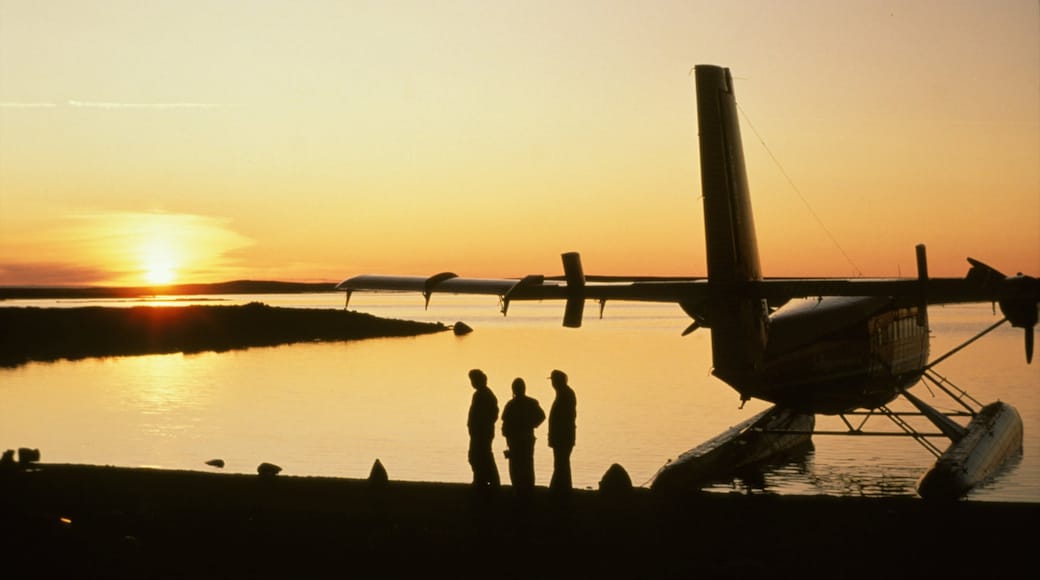Nunavut has the distinction of being the northernmost permanently inhabited place in the world. In summer, this Canadian territory has sunlight 24 hours a day.
In truth, few have mastered living in this sweeping, icy wilderness. However, the territory’s bustling Inuit population gives it a unique culture unlike anywhere else in the world. It has four official languages: Inuktitut, English, French and Inuinnaqtun. Inuktitut, an Inuit language, is the mother tongue of over two-thirds of the Nunavummiut people. Nunavut is mainly split between Baffin Island, one of the largest islands in the world, and Ellesmere Island, the territory’s northernmost island.
Visit Iqaluit, the capital of Nunavut. Get warm in front of a cozy fire or chat with friendly locals at restaurants, hotels and shops. Stop by St. Jude's Anglican Cathedral and note its white dome that was designed to resemble an igloo. Through art and artifacts on display, learn about the region’s Inuit history at the Nunatta Sunakkutaangit Museum.
Enjoy stunning arctic scenery in Auyuittuq National Park. Trek along its hiking trails, take a guided dogsled tour and even camp overnight in an igloo. Discover more snowy wilderness in Sirmilik National Park, including the massive Kaparoqtalik Glacier and the sweeping Byam Martin Mountains.
Because of its extreme conditions, Nunavut is best explored in the company of an experienced Arctic guide. See unusual arctic animals, from polar bears lumbering across the tundra to beluga whales swimming in the Hudson Bay. Get your camera ready to snap photos of the walruses, narwhals, caribou, muskox and other animals that call this territory home.
Iqaluit is the most convenient gateway to Nunavut. However, it is so remote that there are no roads leading in or out of the city. Air travel is your best bet. If ice conditions allow, it can also be reached by sea.




